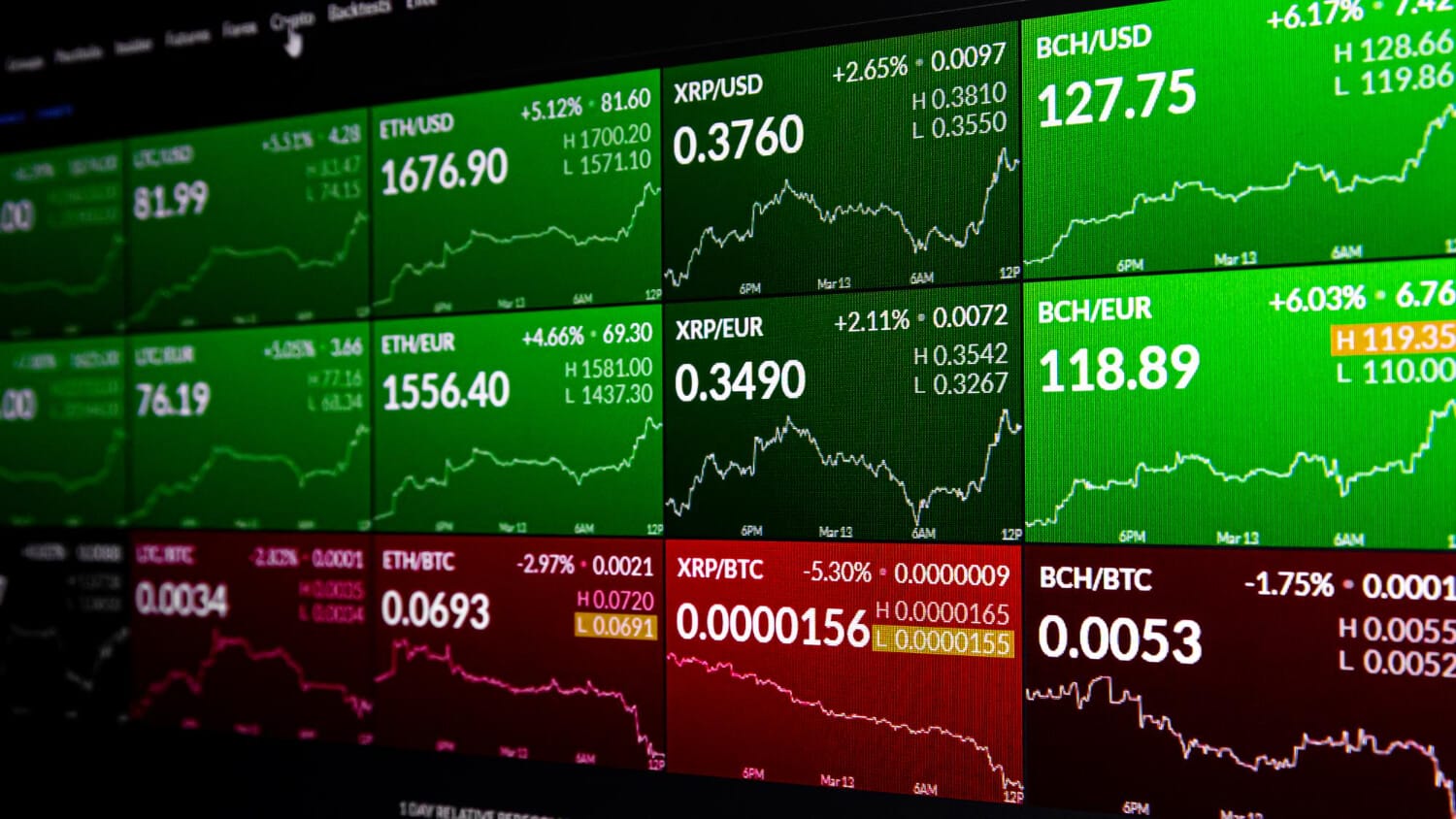Forex trading, also known as foreign exchange or FX trading, involves the buying and selling of currencies on the global currency exchange market. Traders aim to profit from the fluctuations in exchange rates. To make informed trading decisions, traders rely on various analytical methods, with two primary approaches being fundamental analysis and technical analysis. This article will explore these two methods, highlighting their key differences, methodologies, and strengths.
I. Fundamental Analysis in Forex Trading

Fundamental analysis in forex trading is a comprehensive approach that involves studying economic, political, and social factors to evaluate and predict currency movements. This analysis aims to understand the underlying forces that influence exchange rates. Here’s a more detailed explanation of the key components and concepts within fundamental analysis:
1. Economic Indicators:
Gross Domestic Product (GDP): GDP is a critical economic indicator that measures the total economic output of a country. It includes the value of all goods and services produced within a country’s borders. A growing GDP is generally seen as a positive sign for a country’s economy and its currency. Traders and investors pay close attention to GDP releases as they provide insights into the economic health and growth prospects of a nation.
Interest Rates: Central banks set interest rates, and these rates have a significant impact on a country’s currency value. Higher interest rates tend to attract foreign capital seeking better returns, which can lead to an appreciation of the currency. Conversely, lower interest rates can lead to currency depreciation as investors seek higher yields elsewhere.
Inflation Rate: The inflation rate measures the rate at which prices for goods and services rise within an economy. A low and stable inflation rate is generally seen as positive for a currency because it maintains its purchasing power. High inflation erodes the real value of a currency, making it less attractive to investors.
Employment Data: Employment-related data, such as unemployment rates and job creation figures, provide insights into a country’s labor market and overall economic health. Low unemployment rates and strong job creation are often associated with a healthy economy and a stronger currency.
2. Political and Geopolitical Factors:
Political Stability: Political stability is a critical factor in currency valuation. Countries with stable political environments tend to have stronger currencies because they are perceived as safer investments. Political turmoil, on the other hand, can lead to uncertainty and a depreciation of the currency.
Government Policies: Economic policies, trade agreements, and fiscal policies implemented by a country’s government can significantly impact its currency. Policies that promote economic stability, fiscal responsibility, and trade openness can support a strong currency.
Geopolitical Events: Geopolitical events, such as international conflicts or political crises, can lead to significant currency volatility. These events can create uncertainty and affect investor confidence, resulting in rapid currency movements.
3. Economic Events and News Releases:
Economic Calendar: Forex traders often rely on an economic calendar to keep track of important events and economic data releases. These include announcements about central bank interest rate decisions, employment reports, GDP releases, and inflation data. Traders use this calendar to anticipate market reactions to these events.
Market Sentiment: News releases can have a profound impact on market sentiment. Positive economic news can lead to bullish sentiment, increasing demand for the currency, while negative news can trigger bearish sentiment and currency depreciation. Traders analyze news releases and assess how they might influence market sentiment and currency prices.
4. Currency Correlations:
Cross-Currency Relationships: Fundamental analysis also involves considering how one currency’s performance may affect another due to economic ties. For example, if two countries have strong trade relationships, the performance of one country’s currency may impact the other’s. Traders analyze these correlations to make more informed trading decisions.
Fundamental analysis in forex trading provides a broad and holistic view of the factors influencing currency values. Traders who employ fundamental analysis often take a longer-term perspective and use it to make investment decisions based on their assessment of a currency’s intrinsic value in relation to economic, political, and social conditions. However, it’s essential to note that fundamental analysis may not always provide precise timing for trade entries and exits, as economic factors can take time to influence currency values.
II. Technical Analysis in Forex Trading
Technical analysis is a methodology used in forex trading that focuses on analyzing historical price and volume data to predict future price movements. It operates on the principle that historical price patterns and trends tend to repeat themselves, allowing traders to make informed decisions about when to enter or exit positions. Here’s a more detailed explanation of the key components and concepts within technical analysis:
1. Key Technical Concepts:
Charts: Technical analysts use various types of charts to visualize price movements. The most common types are line charts, bar charts, and candlestick charts. Candlestick charts are particularly popular among forex traders because they provide detailed information about price action, including opening, closing, high, and low prices during a specific time frame.
Support and Resistance: Support and resistance levels are essential concepts in technical analysis. Support represents a price level at which a currency tends to find buying interest and reverse upward. Resistance is a price level where selling interest typically emerges, causing the currency to reverse downward. These levels help traders identify potential entry and exit points.
Trends: Trend analysis is a fundamental aspect of technical analysis. Traders seek to identify trends in currency price movements. Trends can be categorized as follows:
- Uptrend: Characterized by higher highs and higher lows, indicating a bullish market sentiment.
- Downtrend: Characterized by lower highs and lower lows, indicating a bearish market sentiment.
- Sideways or Range-bound: Occurs when prices move within a horizontal range, indicating indecision or consolidation.
Indicators: Technical analysts use a variety of technical indicators to assist in their analysis. These indicators are mathematical calculations based on price, volume, or open interest data. Common indicators include:
- Moving Averages: These smooth out price data to identify trends and reversals.
- Relative Strength Index (RSI): Measures the speed and change of price movements to determine overbought or oversold conditions.
- Moving Average Convergence Divergence (MACD): Combines two moving averages to identify potential trend changes.
- Bollinger Bands: Measures price volatility and potential reversal points.
2. Chart Patterns:
Head and Shoulders: The head and shoulders pattern is a reversal pattern that signals a potential trend change. It consists of three peaks: a higher peak (head) between two lower peaks (shoulders). A break below the neckline confirms the pattern and suggests a bearish reversal.
Double Top and Double Bottom: Double top and double bottom patterns indicate potential reversals in the current trend. A double top consists of two peaks at approximately the same price level, while a double bottom has two troughs at a similar price level. Double tops are bearish, and double bottoms are bullish.
Flags and Pennants: Flags and pennants are continuation patterns that suggest a brief consolidation before the prevailing trend resumes. A flag pattern is rectangular, while a pennant is a small symmetrical triangle. These patterns are often seen during strong trends.
Triangles: Triangle patterns indicate periods of indecision in the market. There are three main types:
Ascending Triangle: Shows a flat top and an upward-sloping lower trendline. It often leads to a bullish breakout.
Descending Triangle: Displays a flat bottom and a downward-sloping upper trendline. It often results in a bearish breakout.
Symmetrical Triangle: Neither the bulls nor the bears dominate, leading to an eventual breakout in either direction.
3. Fibonacci Retracement:
Fibonacci retracement is a tool used to identify potential support and resistance levels based on key Fibonacci ratios, such as 0.382, 0.618, and 1.000. Traders draw Fibonacci retracement levels on their charts to help identify potential price reversals or areas of price continuation.
4. Candlestick Patterns:
Candlestick patterns are graphical representations of price movements during a specific time period. These patterns provide insights into market sentiment. Some common candlestick patterns include:
- Doji: Signifies indecision in the market, with the opening and closing prices nearly equal.
- Hammer: Indicates a potential bullish reversal after a downtrend, characterized by a small body and a long lower shadow.
- Shooting Star: Suggests a potential bearish reversal after an uptrend, characterized by a small body and a long upper shadow.
Technical analysis relies on the idea that historical price and volume data, along with these key technical concepts and tools, can help traders make predictions about future price movements. Traders use technical analysis primarily for short to medium-term trading, as it is focused on identifying entry and exit points based on historical patterns and trends. However, it’s essential to keep in mind that technical analysis may not always consider the broader economic and geopolitical factors that can influence currency markets, and it assumes that historical patterns will repeat, which is not always the case.
III. Differences Between Fundamental and Technical Analysis
Understanding the differences between fundamental and technical analysis is crucial for forex traders because these two approaches provide distinct perspectives on how to evaluate and trade in the currency markets. Here, we’ll explore the key distinctions between these two methods in more detail:
1. Focus and Methodology:
Fundamental Analysis:
Focus: Fundamental analysis centers on economic, political, and social factors that affect a currency’s value. It looks at the broader context of a country’s economy and political stability.
Methodology: This analysis relies on studying macroeconomic data, government policies, geopolitical events, and economic news releases. It aims to understand the intrinsic value of a currency based on these factors.
Timeframe: Fundamental analysis often takes a longer-term perspective, making it more suitable for investors looking at extended horizons.
Technical Analysis:
Focus: Technical analysis focuses on historical price and volume data, with the belief that historical patterns and trends will repeat. It prioritizes price movement over the underlying reasons behind it.
Methodology: Traders employing technical analysis use charts, indicators, and patterns to analyze price data. It’s more concerned with timing entry and exit points based on historical price movements.
Timeframe: Technical analysis is typically used for short to medium-term trading and often provides insights for quicker trading decisions.
2. Time Horizon:
Fundamental Analysis:
Time Horizon: Fundamental analysis is better suited for long-term investments. The factors analyzed, such as economic policies and structural changes, may take time to impact currency values. It’s more aligned with a “buy and hold” strategy.
Technical Analysis:
Time Horizon: Technical analysis is well-suited for traders looking to capitalize on short to medium-term price movements. Traders often use technical analysis for day trading, swing trading, or positions held for a few weeks or months.
3. Information Sources:
Fundamental Analysis:
Sources: Fundamental analysts rely on various sources, including economic calendars, government reports, financial news outlets, and academic research. They analyze both qualitative and quantitative data.
Data Type: Fundamental analysis considers a mix of economic statistics (like GDP, inflation rates), political events, and geopolitical developments.
Technical Analysis:
Sources: Technical analysts primarily use historical price charts and technical indicators, which are based on past price and volume data. These sources are more quantitative in nature.
Data Type: Technical analysis relies heavily on price and volume data.
4. Predictive Ability:
Fundamental Analysis:
Strength: Fundamental analysis provides a broader understanding of currency valuation. It considers the “big picture” and underlying economic conditions, making it valuable for assessing long-term trends.
Limitation: However, it may not always offer precise timing for trade entries and exits. Fundamental factors can take time to influence currency values, and market sentiment can fluctuate in the short term.
Technical Analysis:
Strength: Technical analysis excels in offering specific entry and exit points based on historical patterns and indicators. Traders can use it to make relatively quick trading decisions.
Limitation: Its focus on historical data means it may not consider the underlying economic conditions that drive price movements. It’s primarily geared toward short to medium-term trading and may not be as effective for long-term investors.
Understanding these differences is essential for traders to choose the most suitable approach for their trading goals and style. Some traders may specialize in one method, while others integrate both fundamental and technical analysis to make more comprehensive and informed trading decisions. Combining these two approaches can provide a balanced strategy, incorporating both the broader economic context and precise timing for trades.
IV. Advantages and Limitations of Fundamental Analysis
Fundamental analysis is a method used in forex trading to evaluate currencies based on economic, political, and social factors. It offers valuable insights into the intrinsic value of a currency and helps traders and investors make informed decisions. However, like any analytical approach, it comes with its own set of advantages and limitations:
1. Advantages:
Long-Term Perspective:
Explanation: Fundamental analysis is particularly well-suited for investors with a long-term horizon. It allows them to assess a currency’s intrinsic value based on underlying economic and political conditions.
Benefit: By focusing on long-term trends and factors, fundamental analysis helps investors identify potential currency investment opportunities that align with their extended investment goals.
Comprehensive Analysis:
Explanation: Fundamental analysis considers a wide range of economic, political, and social factors. It provides a holistic view of currency valuation by examining the broader context.
Benefit: This comprehensive approach enables traders to gain a deep understanding of the factors influencing currency movements, making it easier to anticipate long-term trends.
Helps Predict Long-Term Trends:
Explanation: By analyzing fundamental data, traders can identify potential long-term trends and investment opportunities. Economic indicators and government policies often have lasting effects on currency values.
Benefit: Investors who use fundamental analysis can position themselves to take advantage of extended trends in the forex market.
2. Limitations:
Time-Consuming:
Explanation: Gathering, analyzing, and interpreting fundamental data can be a time-consuming process. Economic indicators and policy changes are released at different intervals, and their impact may not be immediate.
Challenge: This time lag can pose challenges for traders who prefer shorter-term strategies and need to make quick decisions.
Subjectivity:
Explanation: Interpretation of economic data and events can vary among analysts and investors. Different individuals may have differing opinions on the significance of certain factors.
Challenge: The subjectivity inherent in fundamental analysis can lead to varied conclusions, making it important for traders to develop their analytical skills and rely on objective data.
Lagging Indicators:
Explanation: Some fundamental indicators are considered lagging indicators, meaning they reflect past economic conditions. As a result, they may not provide timely signals for future currency movements.
Challenge: Traders relying solely on lagging indicators may miss opportunities in rapidly changing markets where short-term trends are prevalent.
In summary, fundamental analysis is a powerful tool for understanding the broader economic and political context in which currency values evolve. Its strengths lie in its ability to provide long-term perspectives and comprehensive insights into currency valuation. However, it comes with limitations, including the time required for analysis, subjectivity in interpretation, and the reliance on lagging indicators. Traders and investors often choose to complement fundamental analysis with other approaches, such as technical analysis, to address these limitations and make more well-rounded trading decisions.
V. Advantages and Limitations of Technical Analysis
Technical analysis is a widely used methodology in forex trading that focuses on historical price and volume data to predict future price movements. It offers traders a set of tools and techniques to make decisions based on price charts and patterns. Like any trading approach, technical analysis has its own set of advantages and limitations:
1. Advantages:
Short-Term Trading:
Explanation: Technical analysis is well-suited for traders who seek to capitalize on short-term price movements. It provides tools to identify potential entry and exit points within relatively short timeframes, such as minutes, hours, or days.
Benefit: Traders can use technical analysis to engage in day trading, scalping, or swing trading, allowing for more frequent trading opportunities.
Clear Entry and Exit Signals:
Explanation: Technical analysis provides specific entry and exit signals based on chart patterns, indicators, and support/resistance levels. Traders receive clear guidance on when to initiate trades and when to exit positions.
Benefit: This clarity can help traders implement disciplined and rule-based trading strategies, reducing emotional decision-making.
Objective Approach:
Explanation: Technical analysis relies on quantifiable data, such as price and volume. It offers an objective approach to trading decisions since it is based on mathematical calculations and historical patterns.
Benefit: This objectivity helps traders make decisions based on empirical evidence rather than emotional reactions to market events.
2. Limitations:
Limited Economic Context:
Explanation: Technical analysis primarily focuses on historical price data and patterns. It may not consider the broader economic, political, and social factors that can influence currency markets.
Challenge: Ignoring fundamental factors means that technical analysis might not provide a complete understanding of the reasons behind price movements.
Historical Data Dependency:
Explanation: Technical analysis operates on the assumption that historical price patterns will repeat. However, markets can evolve, and historical patterns may not always hold.
Challenge: Relying solely on historical data can lead to errors in analysis, especially in rapidly changing markets or during unprecedented events.
Overlapping Patterns:
Explanation: Traders often encounter overlapping or conflicting technical signals. For example, one indicator may suggest a buy signal while another points to a sell signal, leading to confusion.
Challenge: Determining which signals to prioritize can be challenging, and traders may need to exercise discretion in their decision-making.
In conclusion, technical analysis offers traders a valuable set of tools for short to medium-term trading, providing clear entry and exit signals and an objective approach to decision-making. However, it has limitations, such as its limited consideration of broader economic contexts, reliance on historical data, and the potential for conflicting signals. Many traders choose to use technical analysis in conjunction with other methods, such as fundamental analysis, to account for these limitations and make more informed and well-rounded trading decisions.
VI. Combining Fundamental and Technical Analysis
In the world of forex trading, some traders opt to blend both fundamental and technical analysis to gain a more comprehensive and well-rounded understanding of the currency markets. By integrating these two approaches, traders seek to leverage the strengths of each method while mitigating their respective weaknesses. Here’s a detailed explanation of combining fundamental and technical analysis:
1. Synergy:
Comprehensive Analysis:
Explanation: Combining fundamental and technical analysis provides traders with a broader and more comprehensive view of the market. While fundamental analysis looks at the underlying economic and geopolitical factors, technical analysis provides specific entry and exit points based on price movements and patterns.
Benefit: This synergy allows traders to make more informed decisions by considering both the macroeconomic context and precise timing for trades.
Timing and Confirmation:
Explanation: Fundamental analysis often provides insights into long-term trends and potential turning points, while technical analysis offers specific timing signals. By using technical analysis to confirm or time trades based on fundamental insights, traders can increase their confidence in trade setups.
Benefit: This approach helps traders refine their entry and exit points, reducing the risk of entering trades prematurely or missing out on opportunities.
2. Risk Management:
Balanced Risk Assessment:
Explanation: Combining both analysis methods helps traders assess risk more effectively. Fundamental analysis can provide early warnings of potential market shifts, allowing traders to adjust their positions or implement risk management strategies.
Benefit: By considering fundamental factors alongside technical signals, traders can better protect their portfolios from unexpected market events.
Flexibility in Trading Styles:
Explanation: Different traders have varying trading styles and preferences. Some may be more inclined toward long-term investing, while others prefer short-term trading. Combining both analyses allows traders to adapt to different market conditions and timeframes.
Benefit: Traders can switch between fundamental and technical approaches as needed, optimizing their strategies to align with market dynamics.
3. Example:
Economic Events and Technical Signals:
Explanation: Suppose a trader monitors a currency pair influenced by an upcoming central bank interest rate decision (a fundamental event). Before the announcement, the trader observes that the currency pair is approaching a key technical support level (a technical signal).
Benefit: By combining these insights, the trader may decide to wait for the interest rate decision (fundamental) and evaluate the market’s reaction. If the currency pair responds positively and bounces off the technical support level, the trader might consider a long position, taking into account both fundamental and technical factors.
4. Challenges:
Potential Conflicts:
Explanation: There may be occasions when fundamental and technical signals conflict. For instance, fundamental analysis may indicate a bearish outlook for a currency, while technical analysis suggests a short-term bullish trend.
Challenge: Traders must exercise judgment in such situations, giving greater weight to the analysis that aligns with their overall trading strategy or timeframe.
Information Overload:
Explanation: Combining both analyses can result in a vast amount of information to process. Traders must manage this overload effectively to avoid becoming overwhelmed.
Challenge: To address this challenge, traders often develop systematic trading plans that outline when to prioritize one analysis method over the other or how to integrate them.
In summary, combining fundamental and technical analysis in forex trading can offer traders a balanced and adaptable approach to decision-making. This integration allows traders to harness the strengths of each method, providing a more comprehensive view of the currency markets. While it offers benefits such as comprehensive analysis, improved risk management, and flexibility, traders should also be mindful of potential conflicts between the two methods and manage the information overload that can arise from their integration.
VII. Conclusion
In the world of forex trading, both fundamental and technical analysis play crucial roles in guiding trading decisions. While fundamental analysis focuses on the broader economic and political factors influencing currency values, technical analysis delves into historical price patterns and indicators to identify short to medium-term trading opportunities.
Choosing between the two approaches ultimately depends on a trader’s time horizon, risk tolerance, and trading style. Some traders may prefer to specialize in one method, while others find success in integrating both fundamental and technical analysis to make informed and well-rounded trading decisions.
Understanding the strengths and limitations of both fundamental and technical analysis is essential for forex traders seeking to navigate the dynamic and complex currency markets effectively. Ultimately, a balanced approach that considers a variety of factors and analytical tools can lead to more informed and successful trading strategies in the ever-evolving forex market.
Don’t trade all the time, trade forex only at the confirmed trade setups.
Get more confirmed trade setups here: forexgdp.com/buy/











